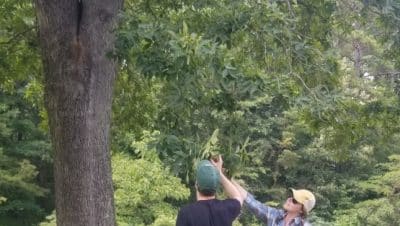
Virginia is among 19 states dealing with the influx of the Asian longhorned tick, a vector for the parasite Theileria orientalis. The parasite can cause theileriosis, or anemia in livestock, including cattle.
There are 38 Virginia counties with established ALT populations including Augusta, Albemarle, Greene, Rockbridge and Rockingham and the City of Staunton.
“When cattle develop theileriosis, signs of anemia, fever, jaundice, difficulty breathing and lethargy can be present,” said Dr. Charles Broaddus, Virginia Department of Agriculture and Consumer Services state veterinarian. “As there is no cure, treatment should focus on supportive measures including stress reduction, nutritional supplementation and above all, prevention in the form of tick control.”
Once symptoms of theileriosis manifest, testing is an important step to confirm the presence of Theileria orientalis.
Dr. Kevin Lahmers of the Virginia-Maryland College of Veterinary Medicine has been leading research on this new pathogen, and Virginia Tech Animal Laboratory Services at VMCVM has developed a PCR test for Theileria orientalis and Anaplasma marginale. This is performed on whole blood in EDTA in live animals but can be run on fresh spleen as well.
For more information on submitting samples, visit vitals.vetmed.vt.edu or [email protected].
Currently there are no movement restrictions of Virginia cattle across state lines and this disease represents no threat to human health.
Tips for managing ALT populations
- Regularly inspect cattle for ticks. As ALT is very small, a thorough inspection is required.
- During inspections, pay close attention to cattle that appear lethargic or anemic, have low weight or have patchy hair.
- Inspect all newly purchased cattle before adding to a herd.
- Submit tick samples to your local extension agent for species confirmation.
- Consider using pesticide-impregnated ear-tags.
- Use backrubbers and siderubbers charged with appropriate pesticides in high-traffic areas.
- For treatment in areas of high-tick concentrations, use direct pour-on treatments.
- Treat all animals in a herd for ticks at the same time.
- Consider keeping pastures mowed shorter.
- Consider keeping cattle out of wooded areas.
- Check any pets or working animals that are in contact with herds.
For more management practices, click here.










